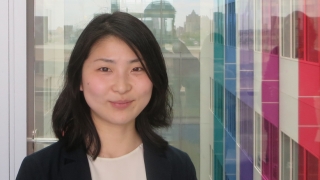Bringing Hope Home
Published on
International UpdatePublished on
International UpdateSawako Miura, MD, couldn’t have picked a better time to come to The Children’s Hospital of Philadelphia: It was late April, and the Hospital’s Department of Anesthesiology and Critical Care Medicine was celebrating its 50th anniversary. And as Miura attended lectures, accompanied clinicians on rounds and observed simulations, she gained a deeper understanding of how pediatric critical care is delivered in the United States – and of just how far the field has come.
Miura, a junior resident in pediatrics at Sendai City Hospital in the Tohoku region of Japan, came to CHOP as part of an educational program sponsored by the Japanese Medical Society of America (JMSA), which sends medical residents from Japan to U.S. hospitals to participate in weeklong observerships. Miura is the first participant the JMSA has placed in a pediatric hospital.
 “I had never worked at a children’s hospital, and I wanted to see what it was like,” says Miura. “I was curious about how residents in the United States take care of patients.”
“I had never worked at a children’s hospital, and I wanted to see what it was like,” says Miura. “I was curious about how residents in the United States take care of patients.”
One key thing that differentiates CHOP from hospitals in Japan, Miura noted, is that residents at CHOP are very involved in developing care plans for patients, and that families are considered part of the medical team. “Care is much more family-centered here,” she says.
The CHOP staff’s inclusive, friendly approach extended to Miura herself. Akira Nishisaki, MD, MSCE, an attending physician in the Department of Anesthesiology and Critical Care Medicine, served as Miura’s mentor during her visit, meeting with her to develop a list of learning objectives and hosting a special dinner to welcome her to Philadelphia. And Colleen King, manager of International Medical Education at CHOP, helped Miura find a place to stay near the Hospital and assisted with other logistics.
Miura is eager to begin using what she learned at CHOP back home in Japan, where the field of pediatric critical care is still in its infancy and pediatricians are in short supply – particularly in Tohoku, which is still recovering from the devastating earthquake and tsunami that struck the region in 2011.
“Pediatricians from other areas came to Tohoku after the disaster,” she says, “but now the level of support is getting smaller and smaller. We are having a problem keeping pediatricians there.”
By hosting educational programs like the one Miura participated in, CHOP is helping to meet the need for specialized pediatric knowledge around the world and giving its own clinicians a new perspective on how healthcare is delivered in other countries – a perspective the Hospital’s international visitors are uniquely qualified to provide. There’s much to learn – and many opportunities to grow – on both sides.
Categories: International medical education